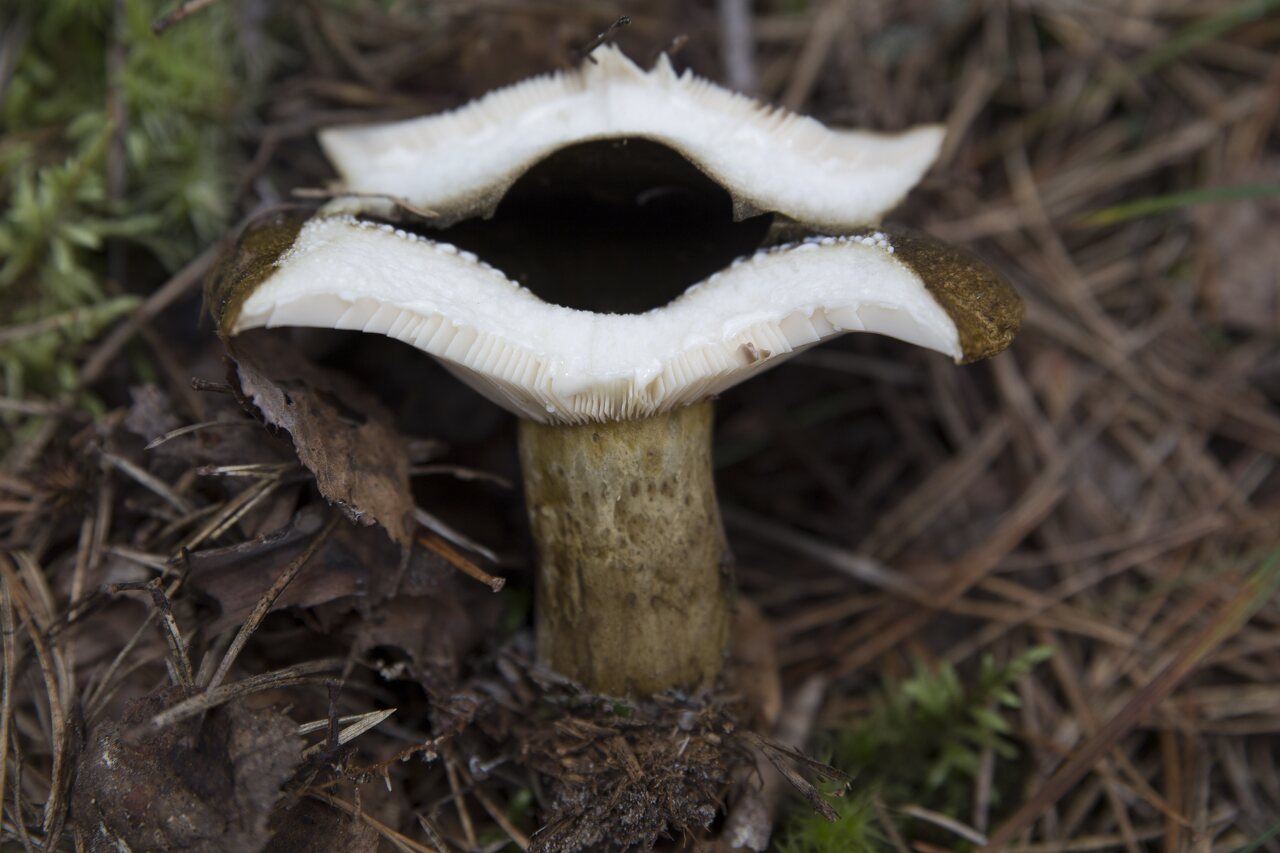
Lactarius turpis · juodasis grūzdas
- ugly milk-cap
- Olivbraune Milchling
- juodasis grūzdas
- cūcene
- mleczaj paskudnik
https://en.wikipedia.org/wiki/Lactarius_turpis It is found naturally in Europe and Siberia and has been introduced to Australia and New Zealand. While especially associated with birch, it is also found with spruce, pine and other trees in mixed woodland.
The cap is normally 8–20 cm in diameter. At first it has an involute margin and a somewhat depressed centre. The upper surface is olive brown or yellow-green and is often sticky or slimy in the middle. When young it has velvety zones and may be shaggy at the rim. Later it becomes funnel-shaped and the colour darkens to blackish. The gills are crowded, dirty white, stained olive-brown by old milk, which is initially white on contact with the air.
This species is reported to contain the mutagen necatorin, and so it cannot be recommended for eating. Boiling reduces the concentration of this compound but does not effectively eliminate it.
Vaisiakūniai dideli, mėsingi. Kepurėlė 7-10 cm skersmens, juodai žalios ar žaliai rudos spalvos. Jos forma įvairi – iš pradžių šiek tiek iškili, vėliau paplokščia, įdubusi. Išskiria pieniškas sultis, kurios baltos ir karčios. Jaunų grybų lakšteliai balti, o pasenusių ochriniai. Grūzdai auga vasarą ir rudenį spygliuočių miškuose, ypač mėgsta eglynus, tačiau neblogai tarpsta drėgnuose ir šlapiuose medynuose. Dažniausiai auga grupėmis. Skanūs sūdyti, bet dabar siūloma nebevalgyti.
‥
0 comments
Add a comment
Comments